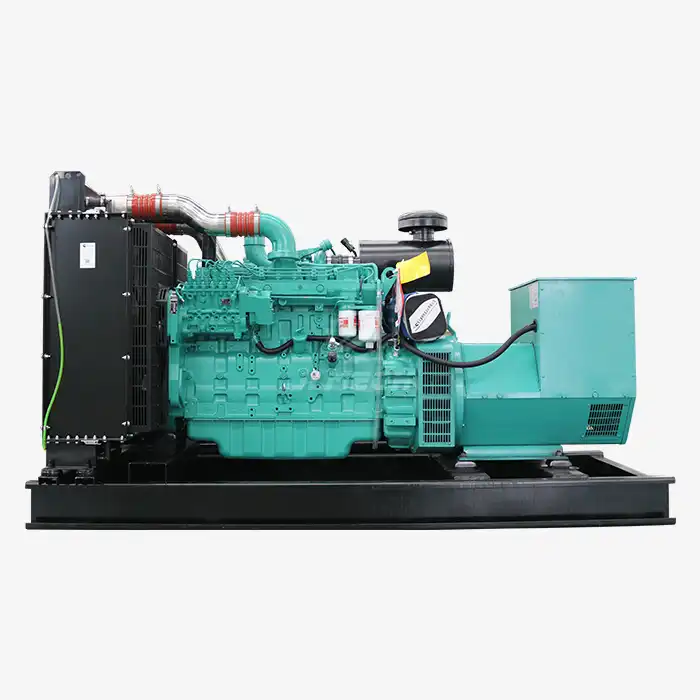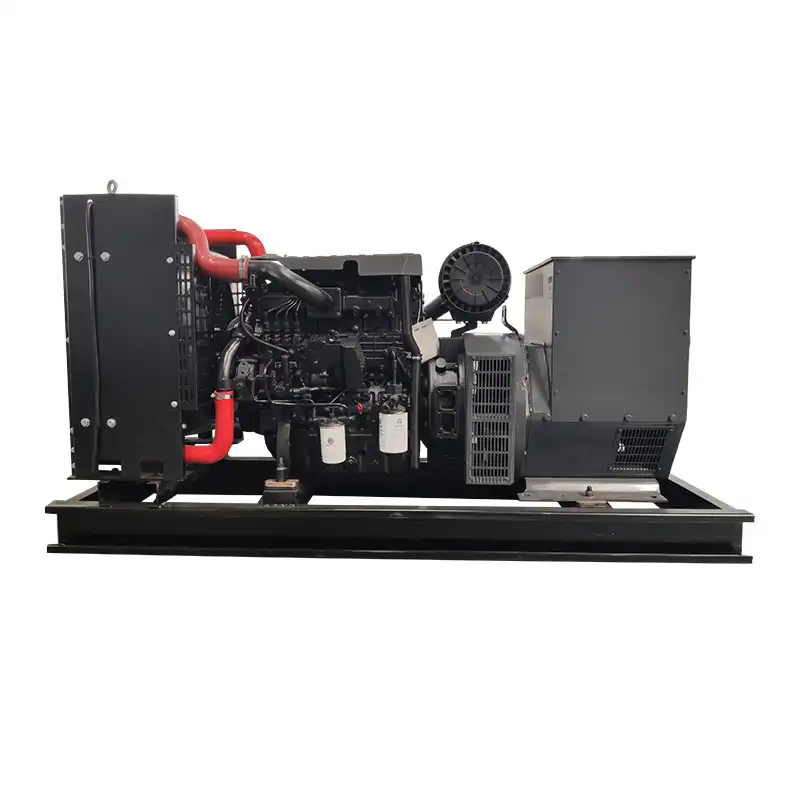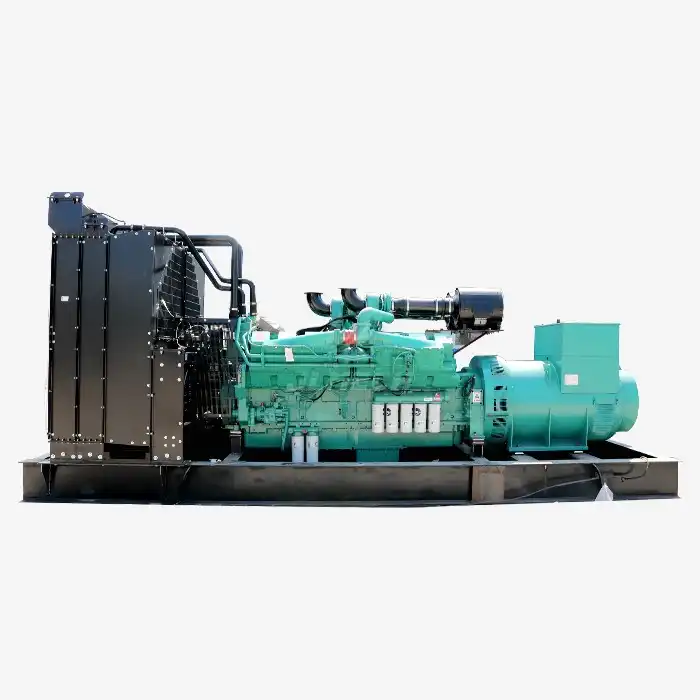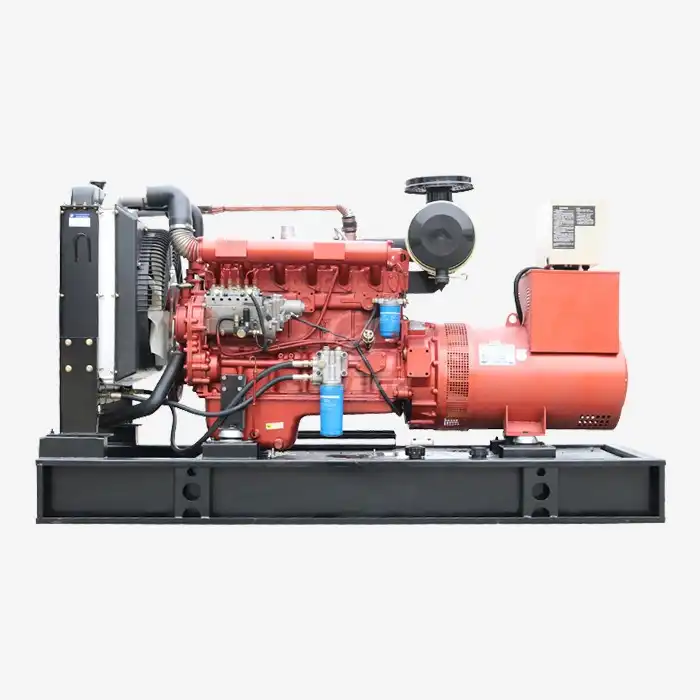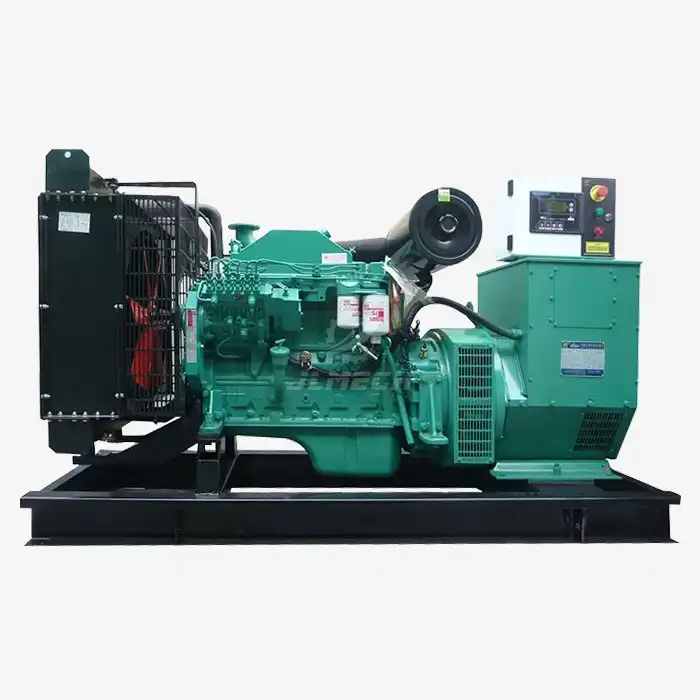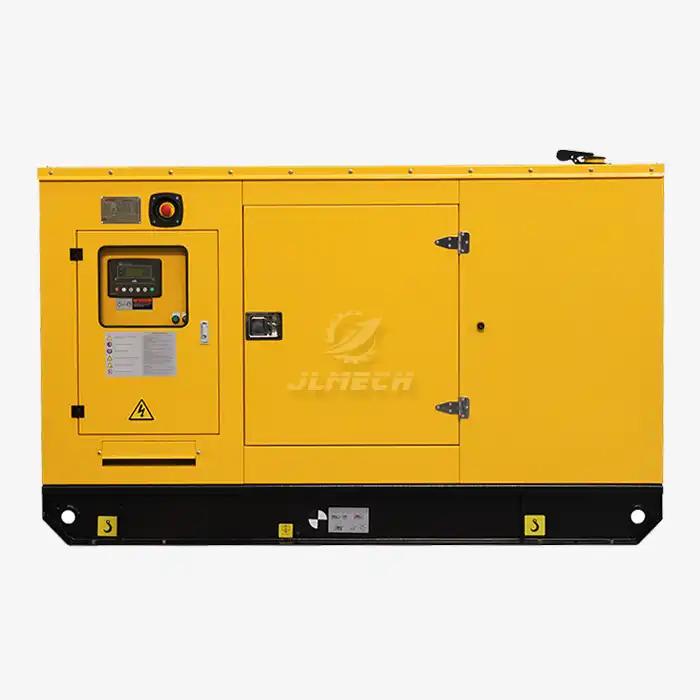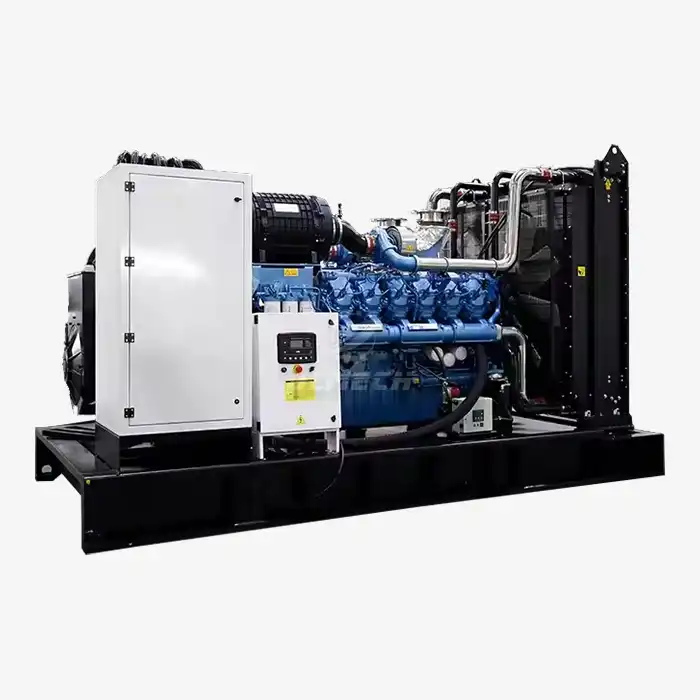Which coolant is used in a diesel generator?
Coolant, often referred to as antifreeze, is a specialized heat transfer fluid essential for regulating the operating temperature of diesel engines. In a liquid cooled diesel generator, this chemical solution circulates through the engine block and cylinder head, absorbing combustion heat and transferring it to the radiator for dissipation. Modern coolants are engineered to perform multiple critical functions: preventing freezing in cold climates, raising the boiling point under pressure, inhibiting corrosion throughout the cooling system, and lubricating the water pump seals. Unlike plain water, which causes scaling and corrosion, proper coolant maintains thermal efficiency and protects the significant investment in your power generation equipment.
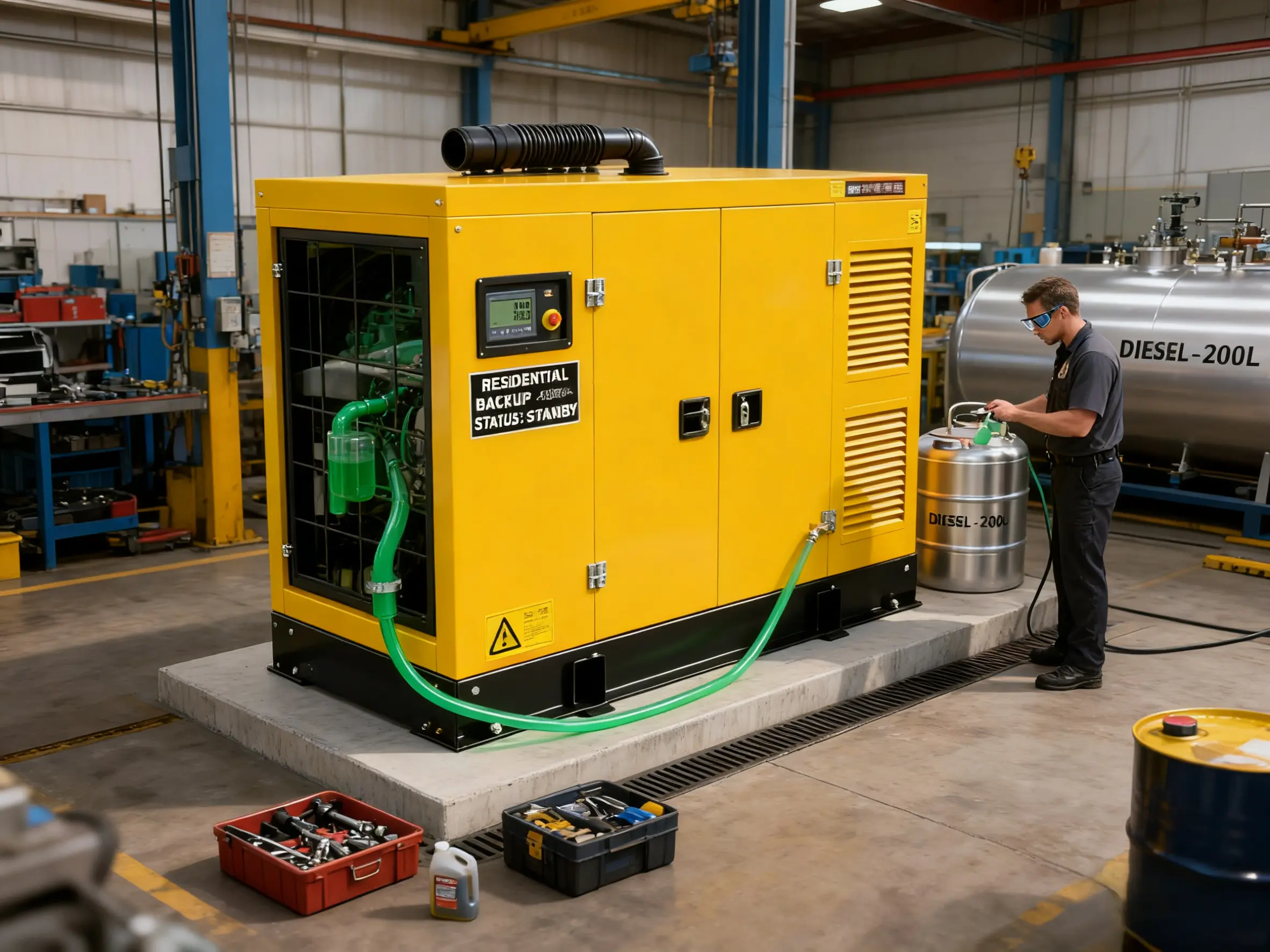
Selection and Mixing Ratios
Choosing and preparing the correct coolant mixture is fundamental to generator longevity:
Base Chemistry: Most diesel generators use ethylene glycol-based coolants, though some modern formulations use propylene glycol which is less toxic.
Concentration Ratio: A 50:50 mix of concentrate and deionized water is standard, providing protection down to -37°C (-35°F). In extreme climates, adjust to 60:40 for protection to -55°C (-67°F).
Water Quality: Always use deionized, demineralized, or distilled water. Tap water contains minerals that form scale deposits, reducing heat transfer efficiency by up to 30%.
Pre-Mixed Options: Many manufacturers offer pre-mixed coolants that eliminate measurement errors and ensure perfect water quality.
The correct mixture is critical for a liquid cooled diesel generator to prevent both freezing in winter and overheating in summer while providing optimal corrosion protection.
International Types and Technical Standards
Understanding global coolant specifications ensures proper selection for your generator:
Traditional IAT (Inorganic Additive Technology): Green-colored, silicate-based formulas requiring replacement every 2-3 years. Suitable for older engines with copper/brass components.
OAT (Organic Acid Technology): Typically orange or red, offering extended service life (5+ years) without silicate drop-out. Compatible with modern aluminum engines.
HOAT (Hybrid Organic Acid Technology): Yellow or turquoise formulas combining silicate and organic acid benefits for broad metallurgy compatibility.
Key international standards include:
ASTM D6210: Standard specification for fully-formulated glycol-based coolant for heavy-duty engines
CAT EC-1: Caterpillar's stringent performance standard for extended-life coolants
Cummins CES 14603: Specification for premium nitrite-free coolants
MB-Approval 325.3: Mercedes-Benz standard for advanced silicate-free coolants
These standards ensure that a liquid cooled diesel generator receives optimal protection regardless of operating conditions.
Selecting the Appropriate Coolant
Choosing the right coolant requires considering several factors:
Manufacturer Recommendations: Always consult your generator manual for specific coolant specifications and approved brands.
Environmental Conditions: Consider the lowest expected ambient temperature to determine the required freeze protection level.
Metallurgy Compatibility: Match the coolant to your engine's materials (aluminum, cast iron, copper, brass, solder).
Maintenance Interval: Extended-life coolants (OAT/HOAT) reduce downtime but may cost more initially.
Additive Package: Look for corrosion inhibitors specifically formulated for diesel engine protection.
The optimal coolant for your liquid cooled diesel generator balances performance requirements with operational practicality.
Maintenance Considerations and Precautions
Proper coolant management prevents costly repairs and downtime:
Testing Frequency: Check concentration and condition every 250 operating hours using refractometers (not hydrometers) and test strips.
Replacement Intervals: Change conventional IAT coolants every 2-3 years or 6,000 hours. Extended-life OAT coolants can last 5-6 years or 12,000 hours.
System Cleaning: Flush the cooling system completely before changing coolant types to prevent additive conflict.
Common Mistakes to Avoid:
Never mix different coolant types (can form gels that clog cooling passages)
Avoid using tap water (minerals cause scaling and corrosion)
Don't overlook coolant pH (maintain between 7.5-11.0)
Address leaks immediately (oxygen ingress accelerates corrosion)
Regular maintenance of your liquid cooled diesel generator cooling system ensures optimal performance and prevents unexpected failures.
Conclusion
Selecting and maintaining the proper coolant is not merely a maintenance task—it's a critical investment in the longevity and reliability of your power generation system. The right coolant choice protects against freezing, boiling, and corrosion while ensuring efficient heat transfer under all operating conditions. Understanding international standards, proper mixing ratios, and maintenance requirements will maximize the service life of your equipment and prevent costly repairs.
At JLMECH, we combine extensive expertise in power generation with an unwavering commitment to quality and performance. Our technical team can provide specific coolant recommendations and maintenance guidance for your liquid cooled diesel generator to ensure optimal performance and longevity.
Contact our experts for personalized coolant recommendations and maintenance guidance. Email us at skala@whjlmech.com for technical support and genuine coolant products specifically formulated for your diesel generator.
References
ASTM International. (2021). ASTM D6210-21: Standard Specification for Fully-Formulated Glycol-Base Engine Coolant for Heavy-Duty Engines.
Caterpillar Inc. (2022). Coolant and Lubricant Recommendations (SEBU6250-19).
National Fire Protection Association. (2022). NFPA 110: Standard for Emergency and Standby Power Systems.
Johnson, M. (2022). Emergency Power Systems: A Comprehensive Guide to High-Speed Diesel Generators. Power Engineering Quarterly, 45(3), 78-92.
Deutz AG. (2023). Coolant Requirements for Diesel Engines (Service Bulletin 0183-2023).



